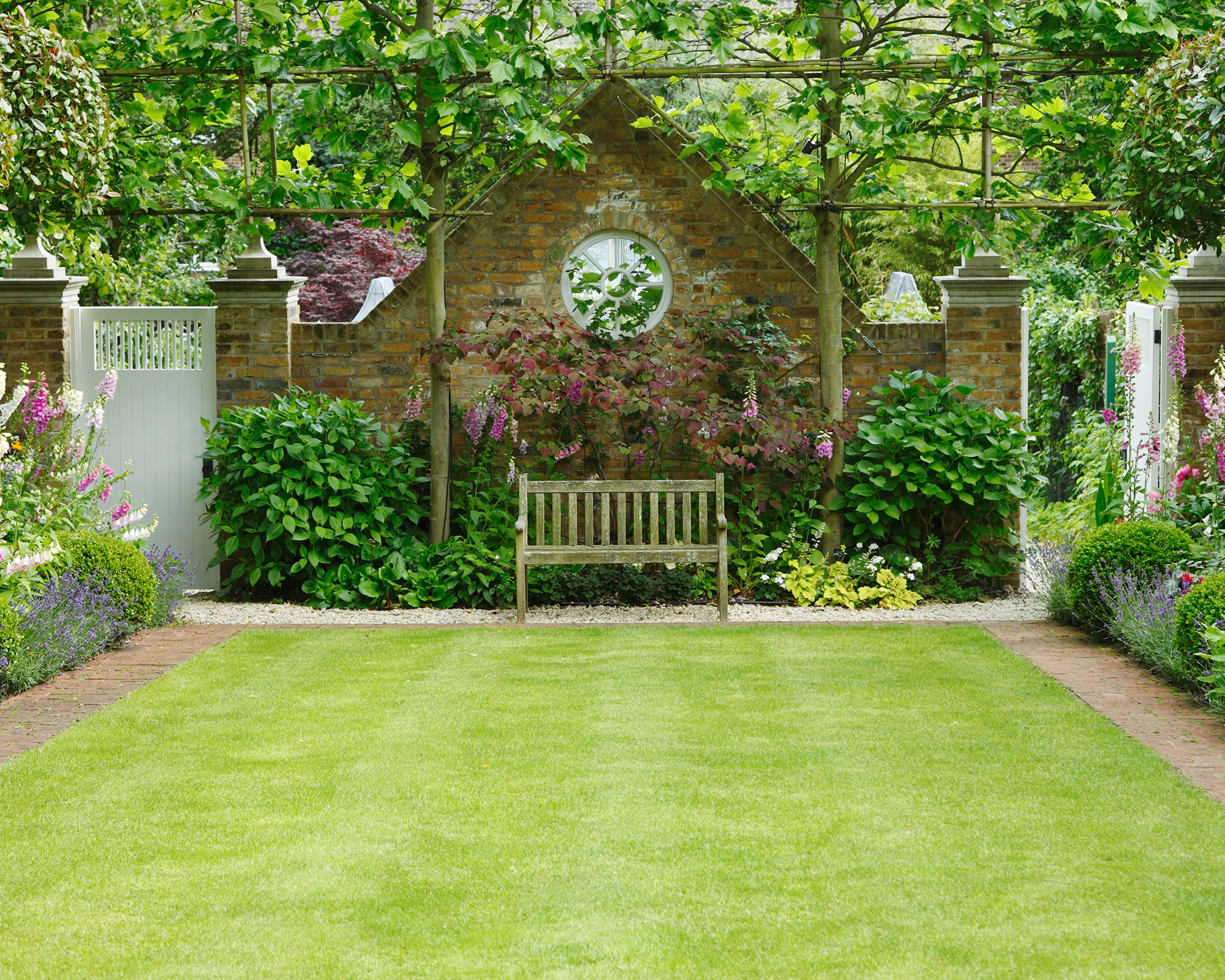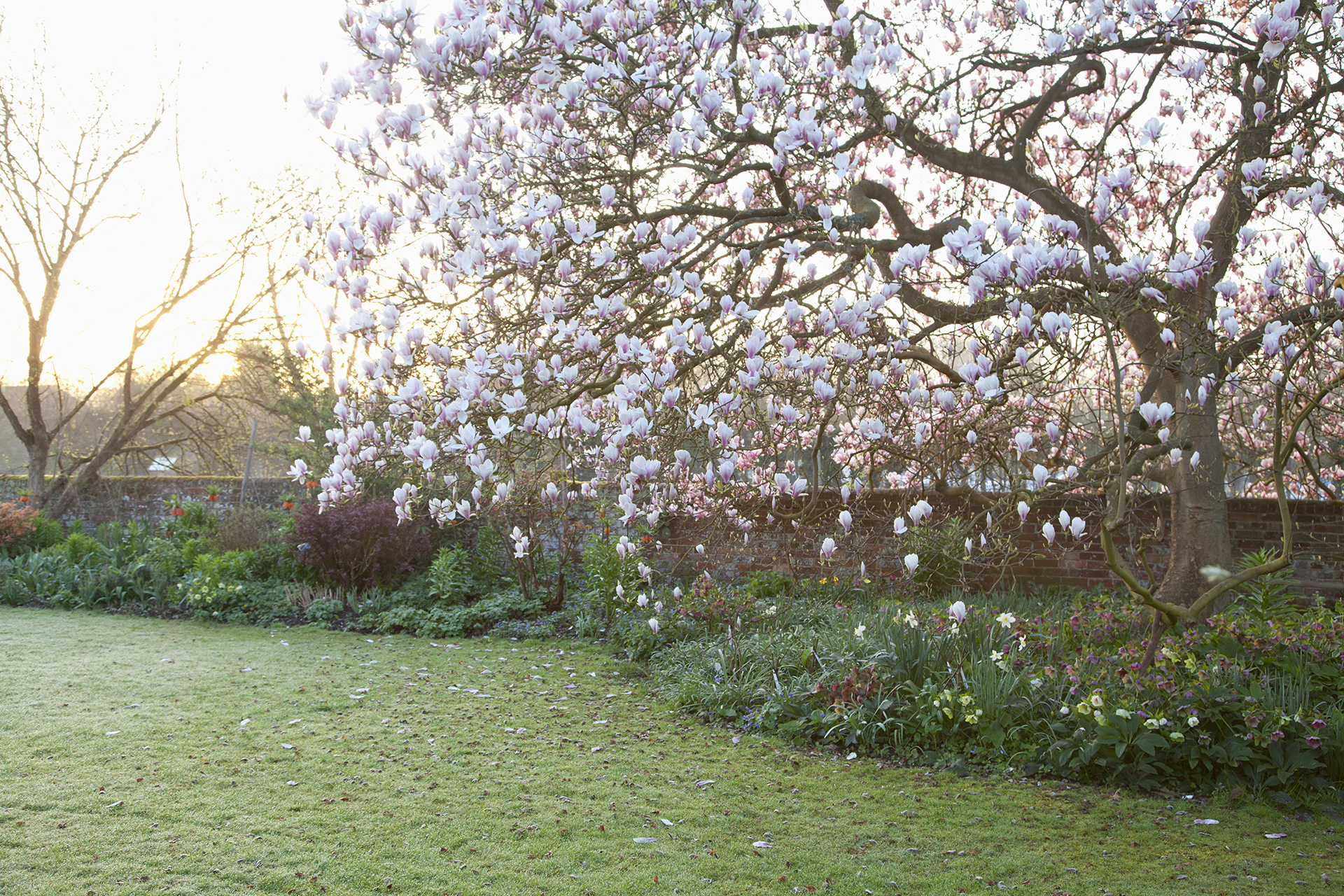Monty Don’s tips on getting the perfect lawn – and the mistakes you're making
Growing a beautifully lush lawn is easier than you think, thanks to this advice from the celebrity gardening expert


With spring just around the corner, your lawn will already be coming back to life, so now is the ideal time to improve its condition for the seasons ahead. To get the best from your grass this year, heed the advice of celebrity gardening expert Monty Don.
See: Best lawn mowers – invest now for a gorgeous garden
In the new edition of his book, The Complete Gardener, Don revealed that at his own garden at Longmeadow, Herefordshire, he doesn't strive for a pristine lawn – just 'an even-ish area of green dominated by grass'. He is not troubled by a few weeds or even a bit of moss.
Don firmly believes that if the grass is healthy then everything else will look after itself.
‘To get a “good” lawn you have to think positively,’ he revealed in a recent blog post. ‘Put your efforts into healthy grass rather than fighting perceived “problems” like daisies, moss, ants, worm-casts, moles, plantains, dandelions and fairy rings.’
However, he stressed that the most common problem for lawns is lack of drainage – and for the best grass your soil does need to be well drained.
See: Take a tour around Monty Don's beautiful Longmeadow garden in Herefordshire
Sign up to the Homes & Gardens newsletter
Design expertise in your inbox – from inspiring decorating ideas and beautiful celebrity homes to practical gardening advice and shopping round-ups.

‘Moss, for example, is always a symptom of poor drainage, made worse by shade,’ he says. ‘Unfortunately even the best prepared soil becomes compacted by matted roots, rain and, especially, normal family use.’
Don explained that to solve the issue it’s important to work on the soil at least once a year. He does this by ‘sticking a fork in the ground and wiggling it about’, repeating the process every 6 inches or so.
To get the right mix for your soil, Don advises that you should combine equal portions of sieved topsoil, sharp sand and sieved leaf mould or compost. ‘Spread it across the area you have pricked and brush it in with a stiff broom, filling the holes with the mixture,’ he says. ‘This will help drainage and feed the grass.’
See: Monty Don reveals the 5 plants you should be pruning now
Don also suggests running a wire rake over the lawn to get rid of excess thatch and moss, and to allow light and water to get to the roots in the soil. However, you should not be cutting back the leaves of spring bulbs at this stage – they need to be allowed to die back naturally as they absorb their energy for next year’s flowers through their leaves.
Finally, you should finish by mowing the lawn. ‘Do not cut it too short,’ he says. ‘Just give it a light trim for the rest of this month and the grass will be a lot healthier – and better able to resist summer drought – as a result.’
More tips for the perfect lawn

To make your lawn as lush as possible, follow the old adage of little and often when it comes to mowing. ‘Cutting the grass very short actually stimulates its rate of growth. This puts a real strain on each of the individual grass plants, as they need to take up extra water and nutrients to enable this to occur,’ says Mick Lavelle, gardening expert and senior lecturer in horticulture at Writtle University College.
Lavelle agrees with Don’s advice that cutting the grass too short will make the lawn prone to drought come summer, and mean it requires more watering. This will only be exacerbated by leaving it to get too long and before giving it a good cut.
- See: Monty Don's bird feeding tips – ensure they're well fed year round
‘Lawns subjected to such treatment almost invariably turn yellow and often only recommence growth once autumn is well underway,’ says Lavelle. So make sure to raise the cutting height of your mower, and don’t leave too long between trims.
It’s also important that your mower blade is sharp, as a dull blade can tear and shed the blades of grass, drying out the grass and allowing diseases to take hold more easily.
Mow when the grass is dry where possible, but if it’s getting too long then it is better to cut it when damp rather than just leave it.
Grass consists of up to 90 per cent water, so when the weather is dry for long periods you will need to water it to keep it lush – but where possible use harvested rainwater rather than overusing sprinklers.
‘Even well-kept lawns tend to go brown in hot summers,’ says Lavelle. ‘If this does occur, fear not; your lawn is just resting and will green up once autumn rains arrive.’

Melanie has worked in homes and gardens media for two decades. Having previously served as Editor on Period Living magazine, and worked on Homes & Gardens, Gardening Etc, Real Homes, and Homebuilding & Renovating, she is now focusing on her passion for gardening as a Senior Editor at Gardening Know How. As a keen home grower, Melanie has experimented with pretty much every type of vegetable at some point – with mixed results. Often it is the simplest things that elude you, which may explain why she just can't seem to master zucchinis.
-
 Extend the lifespan of your appliance with 5 simple but crucial washing machine maintenance tips
Extend the lifespan of your appliance with 5 simple but crucial washing machine maintenance tipsFrom cleaning the filters to keeping the door open, experts reveal the washer tips they swear by
By Andy van Terheyden Published
-
 These are the 6 must-have colors to decorate with in April 2025
These are the 6 must-have colors to decorate with in April 2025What do retro-inspired yellows and beautiful blues all have in common? They're on our hot list for the season ahead
By Sophia Pouget de St Victor Published
-
 Water garden ideas – 9 ways to introduce soothing water to your outdoor space
Water garden ideas – 9 ways to introduce soothing water to your outdoor spaceFrom cascading fountains to wildlife ponds, there are plenty of ways to create a tranquil water garden
By Leigh Clapp Published
-
 How to grow poppies
How to grow poppiesFind out how to grow poppies to enjoy the beauty of these brightly colored tissue paper-like blooms
By Leigh Clapp Published
-
 How to grow delphiniums from seed
How to grow delphiniums from seedFind out how to grow delphiniums from seed and enjoy these colorful cottage garden favorites filling beds and borders
By Leigh Clapp Published
-
 How to grow ferns – when and how to plant and care for them
How to grow ferns – when and how to plant and care for themLearn how to grow ferns to enjoy the texture and form of these versatile plants in many areas of your garden
By Leigh Clapp Published
-
 How to grow sweet peas from seed – in borders and pots
How to grow sweet peas from seed – in borders and potsFind out how to grow sweet peas and where to enjoy their wonderful color, ruffled blooms and sweet fragrance in your garden
By Pippa Blenkinsop Published
-
 How to make fat balls for birds – easy steps feed our feathered friends
How to make fat balls for birds – easy steps feed our feathered friendsLearn how to make fat balls for birds to ensure their wellbeing throughout the winter
By Holly Reaney Published
-
 Planning a kitchen garden – from layouts to picking the best crops
Planning a kitchen garden – from layouts to picking the best cropsPlanning a kitchen garden is easy with this expert advice – whether yours is in beds, borders or a dedicated patch – you're guaranteed success
By Leigh Clapp Published
-
 How to grow cosmos – expert tips on when and where to plant these flowers
How to grow cosmos – expert tips on when and where to plant these flowersLearn how to grow cosmos to add bright color in your garden from summer through to fall with their beautiful blooms
By Leigh Clapp Published